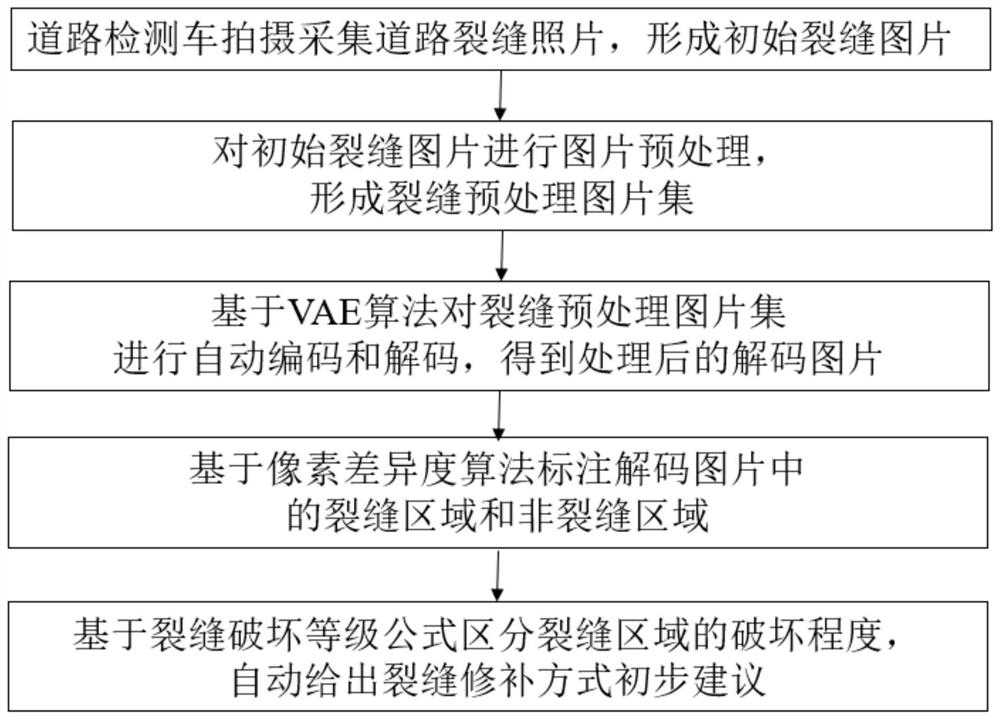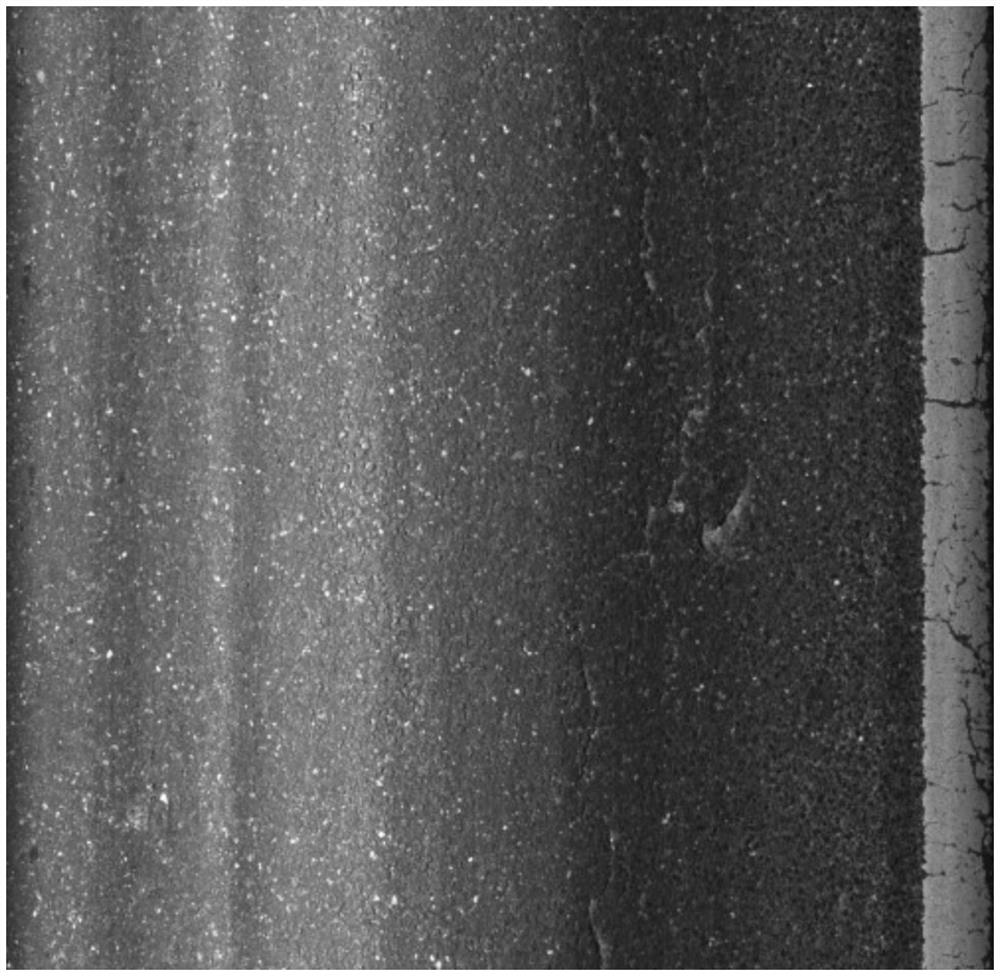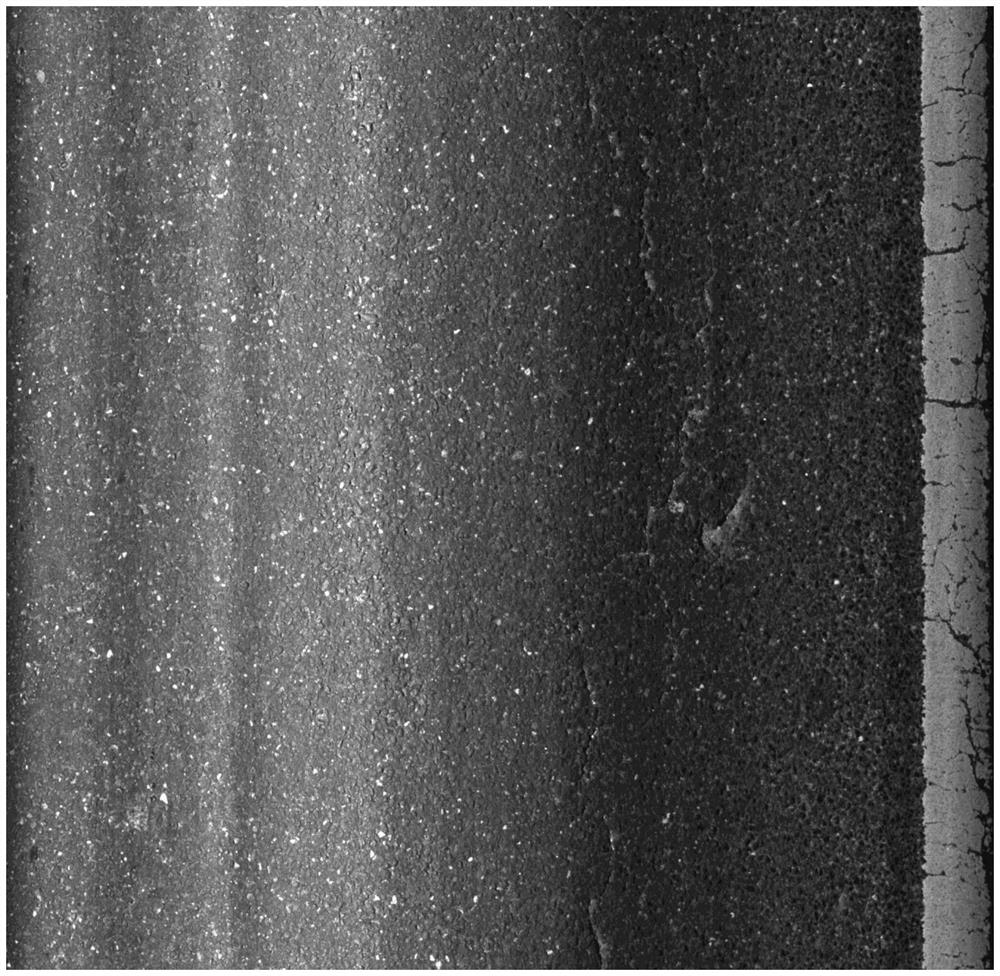A road crack image recognition and processing method
A technology of image recognition and processing methods, applied in image data processing, neural learning methods, image analysis, etc., can solve problems such as rapid detection of road conditions, evaluation development, subjectivity and insecurity, and high work intensity, etc., to avoid Artificially judge the effect of heavy workload, rich features, and improved work efficiency
- Summary
- Abstract
- Description
- Claims
- Application Information
AI Technical Summary
Problems solved by technology
Method used
Image
Examples
Embodiment 1
[0096] A road crack image recognition and processing method, such as figure 1 shown, including the following steps:
[0097] Step1: The road inspection vehicle takes photos of cracks on the road to form an initial picture of cracks;
[0098] Step2: Perform image preprocessing on the initial crack image to form a crack preprocessing image set;
[0099] Step3: Based on the VAE algorithm, automatically encode and decode the crack preprocessing image set to obtain the processed decoded image;
[0100] Step4: Based on the pixel difference algorithm, mark the crack area and non-crack area in the decoded picture;
[0101] Step5: Based on the crack damage grade formula, the damage degree of the crack area is distinguished, and preliminary suggestions for crack repair methods are automatically given.
[0102] Wherein, the image preprocessing in Step2 includes image flipping, image rotation, and image interpolation, and may also include other preprocessing methods, such as adjusting ...
Embodiment 2
[0114] Embodiment 2: The difference between embodiment 2 and embodiment 1 is that a specific method is provided for the preprocessing process of pictures.
[0115] Specifically, such as Figure 2-Figure 4 As shown, the image rotation adopts 180 degree rotation, the image flipping is left-right flipping, and the image interpolation adopts the following formula for pixel adjustment:
[0116]
[0117] Among them, both u and v are constants between 0 and 1, and C(i+u, j+v) represents row i, column j in the crack preprocessing picture and line i+1 and j in the crack preprocessing picture Between +1 columns, and the gray value of the pixel point whose horizontal displacement is u and the vertical displacement is v in the i-th row and j-th column in the crack preprocessing picture, A(i, j) represents the first crack on the initial crack picture The gray value of the pixel in row i and column j, A(i+1, j) represents the gray value of the pixel in row i+1 and column j on the initia...
Embodiment 3
[0120] Embodiment 3: The difference between Embodiment 3 and Embodiment 1 is that a specific evaluation method for road repair is provided.
[0121] Specifically, step4 includes the following steps:
[0122] Step4.1: Store all pixels on the decoded picture in the initial non-mutant set X 0 middle,;
[0123] Step4.2: In the initial non-mutation set X 0 Extract a pixel point x and store it in the mutation set Y to form a non-mutation set X 1 ;
[0124] Step4.3: Calculate the non-mutation set X 1 and the pixel difference D(X 1 ) and D(X 0 ), when D(X 1 )≤D(X 0 ), store the pixel point x in the mutation set Y, otherwise, store the pixel point x in the initial non-mutation set X 0 middle;
[0125] Step4.4: Repeat steps 4.2-4.3 until all pixels are extracted, and all pixels are only extracted in order to form
[0126] Final non-mutated set X* and final mutated set Y*;
[0127] Step4.5: Mark the final mutation set Y* on the decoded picture to form one or more continuous b...
PUM
 Login to View More
Login to View More Abstract
Description
Claims
Application Information
 Login to View More
Login to View More - R&D
- Intellectual Property
- Life Sciences
- Materials
- Tech Scout
- Unparalleled Data Quality
- Higher Quality Content
- 60% Fewer Hallucinations
Browse by: Latest US Patents, China's latest patents, Technical Efficacy Thesaurus, Application Domain, Technology Topic, Popular Technical Reports.
© 2025 PatSnap. All rights reserved.Legal|Privacy policy|Modern Slavery Act Transparency Statement|Sitemap|About US| Contact US: help@patsnap.com



